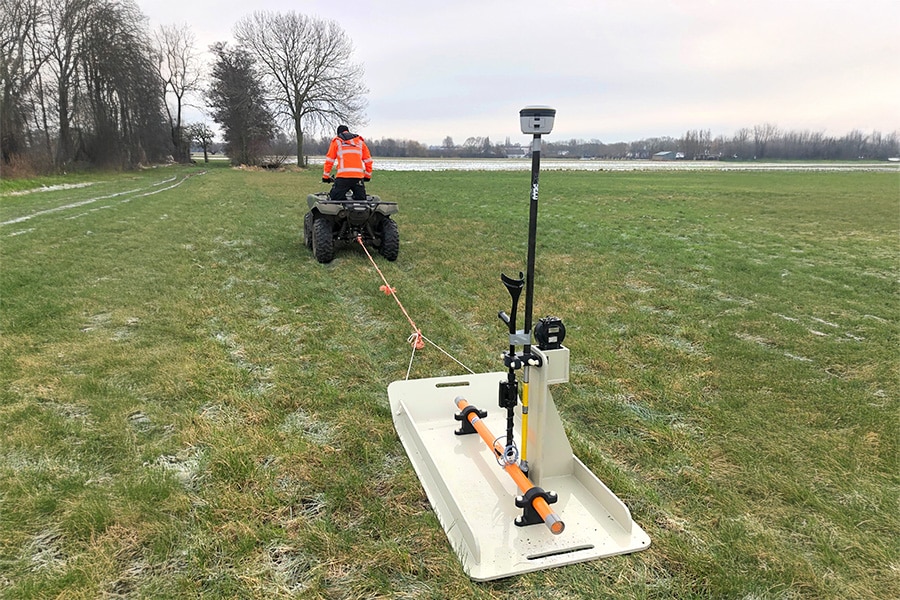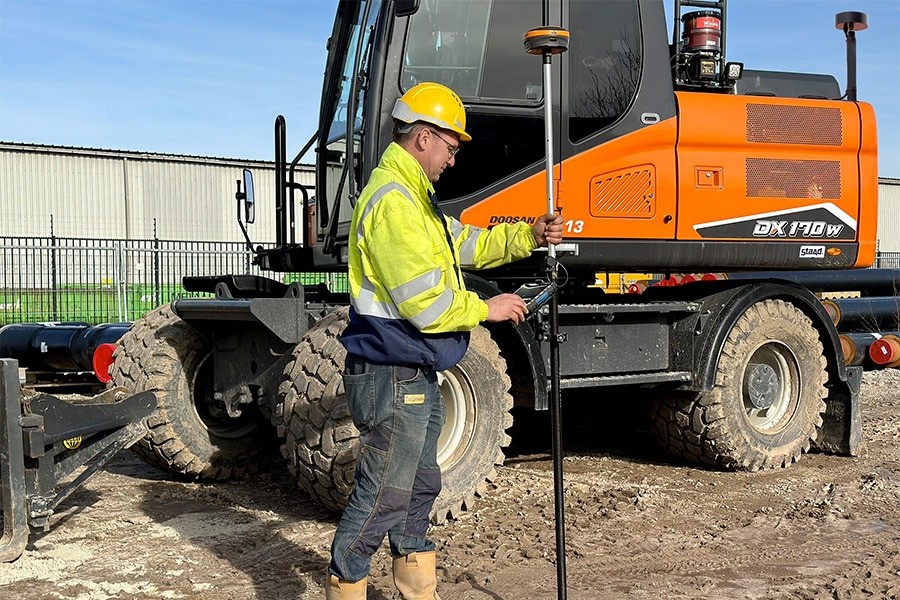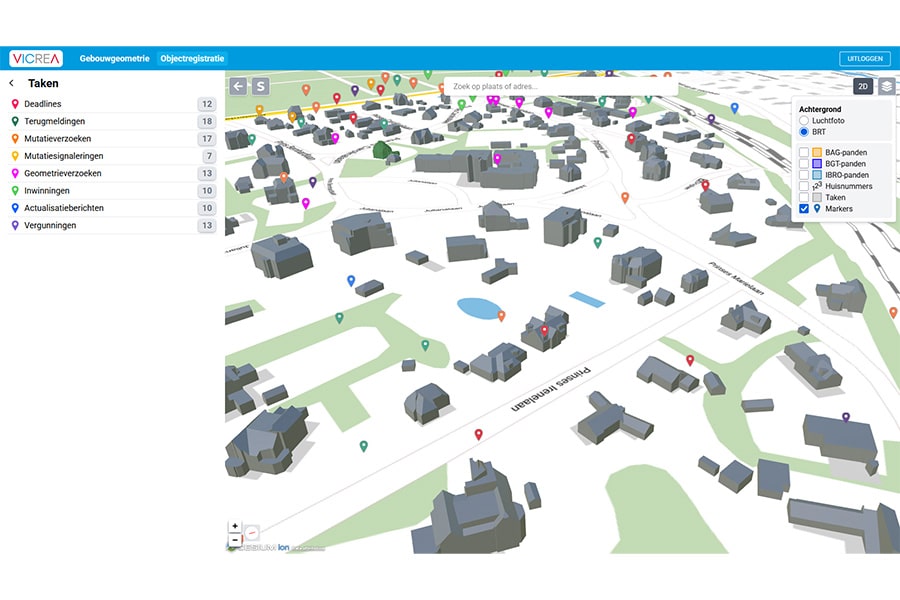
Integrated area development brings beautiful innovations
In 1993 and 1995, Limburg was rocked by two major floods of the Meuse River. The consequential and economic damage was enormous. In haste, temporary measures were taken with a view to a more resistant development in the future. And that development is now underway and more radical than initially thought. Reason to label the project as area development. In an area of no less than 60 km2 executive combination Mooder Maas is tackling the high-water problems, including dikes unique to our country.
According to environmental manager Keesjan van den Herik of client Projectbureau Ooijen - Wanssum, the area development is twofold. "We are tackling the high-water problems with a definitive solution by both constructing new dikes and creating more space for the Meuse. Because a thorough preliminary investigation showed that the consequences would be so far-reaching for the environment, it has become an integral area development. After all, you can only do it right once. The goal is to raise the flood protection behind the quays to the level of one flood in 250 years. In addition, we realize a water level decrease of 37 centimeters in high water periods at a peak discharge of 3,275 m3 water per second."
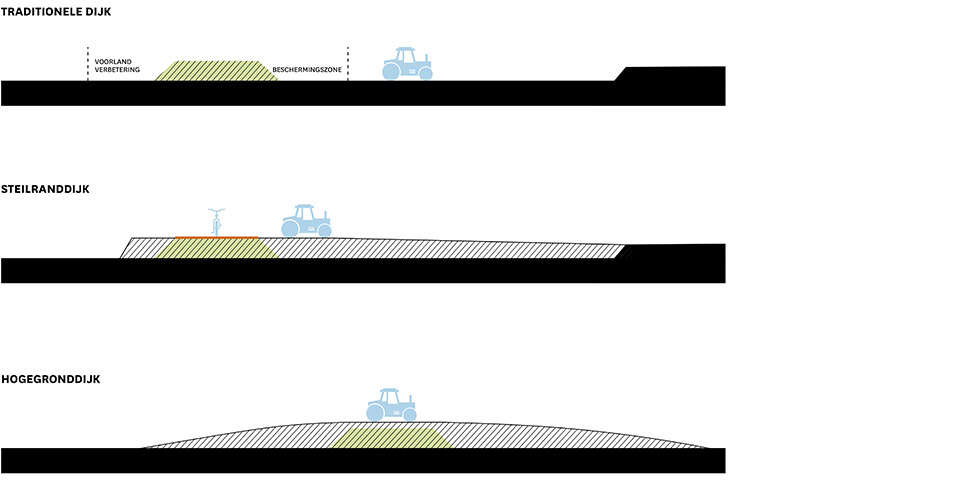
Mooder Maas rendering of new dike typologies.
Innovative dikes
The extensive project is divided into six subprojects and includes the construction of new dikes, the construction of a high-water channel in Ooijen and Wanssum, the restoration of the Old Meuse arm and the construction of a new bypass including the necessary structures. "The strength of the project is that it is considered one integral task," Keesjan believes. "Even the objectives are integral, there is one budget and one design in which everything is designed in conjunction. And that has produced some nice innovations, such as a dyke typology that is new to the Netherlands." Rody Kusters, construction manager on behalf of Mooder Maas, a combination of Dura Vermeer and Ploegam, can attest to that: "We have introduced two new dike types in this project, the high ground dike and the steep edge dike, both of which will be constructed with area-specific soil (soil released when the two gullies are deepened) and act as an extension of the landscape. Even during the tender process, we knew that we had to commission large-scale research to make all this possible. Immediately after the project was awarded, arrangements were made for this research with two universities in Germany, where a full-scale dike was built with the clay from the project area and successfully tested. In this way, in the context of sustainability and CO2-emissions huge savings."
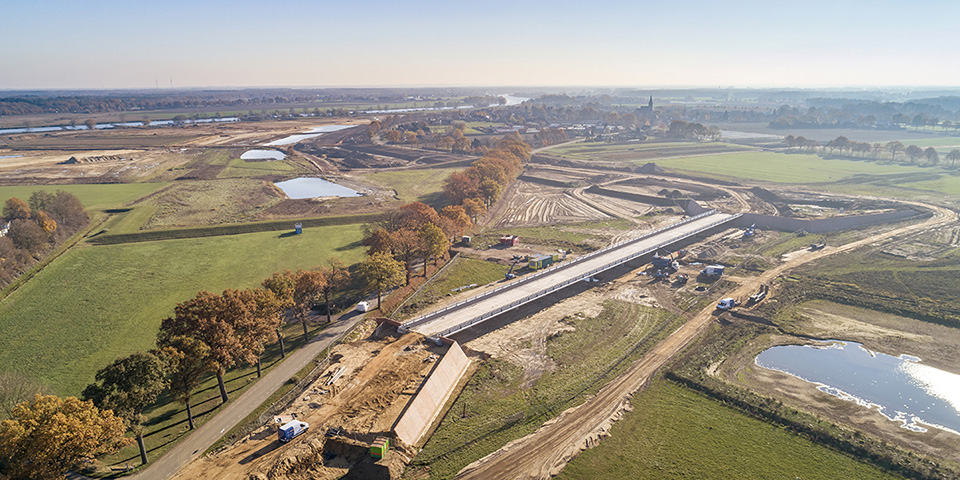
Mooder Maas Bridge Ooijen over the inflow opening of the Old Meuse Arm.
On the left, the flood channel Ooijen and the Meuse River.
Longest girders in the world
The new bypass around Wanssum is another major sub-project. Kusters: "This is a 4-kilometer-long road with three traffic circles, two underpasses and a 69-meter-long bridge, 10 meters above the harbor. We make the abutments on site; the eight beams of 69 meters in length are delivered prefabricated. They are the longest prefabricated girders in the world. Hoisting will take place in mid-2020. Also unique is the 1-kilometer-long route to and from the bridge, which will be executed in vertical concrete walls in an aesthetic quality. A total of 12,000 m2 of these elements. In the current N270, we are replacing an existing culvert with an 80-meter-long architectural bridge that we are building right next to it to minimize disruption to the 10,000 traffic movements per day. Across the Oude Maasarm, which is to be reactivated, we will construct two more bridges, so that residents of Ooijen can be opened up to the hinterland at high water. In addition, we are realizing 2.5 kilometers of new quay walls in the village and industrial harbor of Wanssum and at some custom locations."
Work began in late 2017 and the entire project will be completed in 2020. "In addition to flood protection, the area development will contribute to the development of nature and landscape and increase the livability and economy in the area," Keesjan concludes. The 540 acres of nature will be arranged as one area and will "maintain itself" largely with the release of a certain type of cattle and horses.
